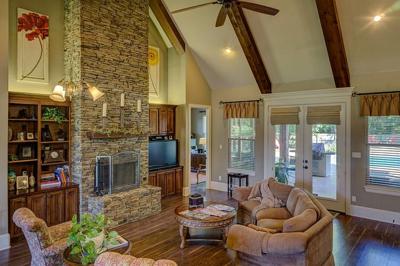
Home designs determine the future of pest vulnerability in your home. Evaluating and implementing your home design during the early stages of building, construction, or renovation is very important. When coming up with your home design, it is important to be mindful of the materials, items, and outlay used and pest issues that may come along due to that design. Certain designs such as white light bulbs, white windows, and door frames can attract pests. Therefore, evaluating your home design is crucial to help you understand why pests are coming into your home and how to get rid of them.
Are you looking for the best pest control services for your home? Don't make it enticing for pests to live there. Use Excel Pest Services to help you prevent and get rid of pests invading your home.
White Light Bulbs
Almost all insects can only see green, ultraviolet, and blue lights; they are normally enticed to light bulbs that emit calm colored light. In case the LED lights you use at home give off soft-shaded light, the probability of it attracting insects is very high. Using yellow-tinted light bulbs such as halogen bulbs and sodium vapor is the best way to ensure that your lights are not welcoming to insects.
A pest control Elk Grove service can help you choose the best lighting options and advice on proper placement to avoid attracting pests. Pests are not only attracted to light bulbs inside your home but also to outdoor lights. Placing your porch or patio lights far from the door and facing away from the house can help reduce pests flying into your home.
White Doors and Window Frames
Pests, especially stink bugs, find the white paint on your windows and door frames very attractive. To prevent these bugs from visiting your windows and doors, adding a splash color to your home paintings will be of great importance. Use another color apart from white when painting your doors and windows.
Untreated wood
Unfinished and weathered wood frequently attracts carpenter bees. Untreated wood could attract these bees in the eaves, sidings, or decks of your home. To avoid the devastating damage of carpenter bees in your home, ensure that all woods are treated with weatherproofing material and moisture.
House plants
Some house plants, especially those that suffer from plant feeding insects like aphids, can attract ants. Aphids produce honeydew which ants like to feed on. Keeping your plants healthy is not all you need. Some plants can also attract other insects like springtails, which breed on the soil plants, especially if you overwater your plants. Always drain stagnant water on the base of the plant and carry out a regular check on their leaves to identify insects.
Unsealed Cracks
Ensuring that there are no entries like holes and cracks is the best way to prevent pests from entering your home. It is also necessary to inspect your perimeter, particularly when seasons change. Any openings, whether, tiny or large, can attract pests into your home. Ensure that all unsealed cracks are sealed in order to keep pest away.
Unused Drains
Clogged or unused drains could attract many pests, such as flies. Drain flies love to breed and feed in dormant drain, which has little water and some organic materials like soap and hair coating. Ensuring that your drains are not backed up will reduce the chances of these flies breeding in your house.
Moisture
Just as human beings need water in their daily lives, so do pests. Dampness attracts pests in many ways. Small amounts of water dripping from an air conditioner attract wasps that are looking for water. Termites also get attracted to water that is soaked in wood. Gutters and downspouts holding water can be a perfect breeding place for mosquitoes. Keeping your dripping faucet dry attracts rodents, especially if there are no other water sources.
Disconnected Downspout
Having water draining on or under your home could be as a result of a disconnected sprout. A disconnected downspout will trap moisture, which contributes to pests' infestations and decay. Conduct regular checks on your downspout to ensure they are appropriately connected. Also, setting up all water drainage systems to flow away from your home is essential.
Stacks of Paper
Some pests such as termites, cockroaches, and silverfish like to feed on cellulose substances, which can be found in old books and paper pages. Pilling and leaving stacks of papers at home can invite these horrible critters. To avoid these pest infestations, keep your old newspapers, books, letters, or documents in airtight storage containers.
Ensuring that your home design considers the following items will reduce the risks of pests' infestation in your home.



(0) comments
We welcome your comments
Log In
Post a comment as Guest
Keep it Clean. Please avoid obscene, vulgar, lewd, racist or sexually-oriented language.
PLEASE TURN OFF YOUR CAPS LOCK.
Don't Threaten. Threats of harming another person will not be tolerated.
Be Truthful. Don't knowingly lie about anyone or anything.
Be Nice. No racism, sexism or any sort of -ism that is degrading to another person.
Be Proactive. Use the 'Report' link on each comment to let us know of abusive posts.
Share with Us. We'd love to hear eyewitness accounts, the history behind an article.